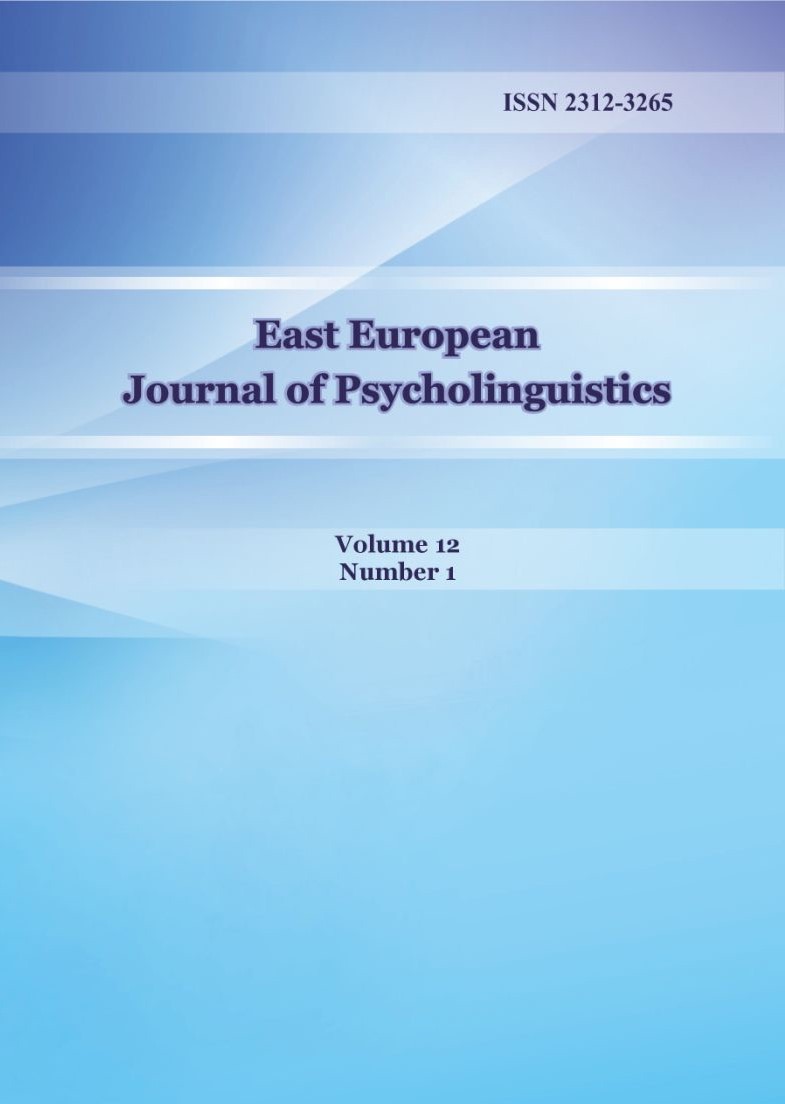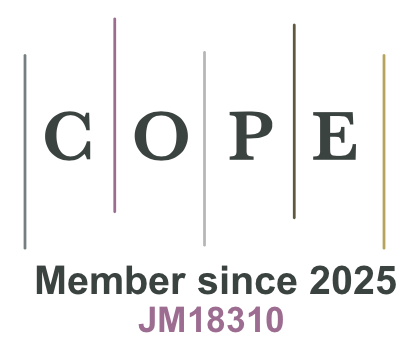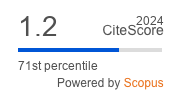Арабські дієслівні моделі та макроструктура в наративах підлітків: порівняльний аналіз різних систем письма
DOI:
https://doi.org/10.29038/eejpl.2025.12.1.talКлючові слова:
розповідь, системи письма, макроструктура, дієслівні моделі, палестинська арабська моваАнотація
Метою дослідження є вивчення дієслівних моделей у наративних структурах серед арабськомовних підлітків, які використовують різні системи письма — арабську, латинську та іврит. Дослідження аналізує, як ці системи письма впливають на складність і різноманітність вживання дієслів, висвітлюючи лінгвістичні проблеми в багатомовному освітньому контексті. Проаналізовано розповіді 78 учнів трьох класів (7, 9 та 11) з використанням змішаного методу. Це включало оцінку макроструктури розповіді та аналіз вживання дієслів, зосередившись на частоті, типі та символі. Дієслова було класифіковано за семантичними ознаками, такими як активність, перехідність та час, щоб зрозуміти їхню роль у побудові розповіді в різних письмах. Користувачі івритського письма продемонстрували більш складні дієслівні моделі та вищі макроструктурні показники порівняно з однолітками, які використовували арабське або латинізоване арабське письмо. Було виявлено значущу позитивну кореляцію між різноманітністю типів коренів, що використовуються в арабському письмі, та складністю оповіді, що підкреслює вплив мовної глибини на якість оповіді. У всіх системах письма простежено перевагу подійних та перехідних дієслів, причому дієслова минулого часу переважно впливали на структурування розповіді. Вибір системи письма значно впливає на дієслівні моделі оповіді в диглосичному середовищі. Іврит є когнітивно легшим, що вказує на необхідність освітніх стратегій для покращення навичок розповіді та підтримки мовної адаптивності в різних системах письма в багатомовних середовищах.
Декларація щодо конфлікту інтересів
Автори повідомили про відсутність потенційного конфлікту інтересів.
Завантажити
Посилання
Abu Elhija, D. (2012). Facebook written Levantine vernacular languages. The Levantine Review, 1(1), 68–105. https://doi.org/10.6017/lev.v1i1.2157
Abu Elhija, D. (2014). A new writing system? Developing orthographies for writing Arabic dialects in electronic media. Writing Systems Study, 6(2), 190–214. https://doi.org/10.1080/17586801.2013.868334
Abu Elhija, D. (2017). Hebrew loanwords in the Palestinian Israeli variety of Arabic (Facebook Data). Journal of Language Contact, 10(3), 422–449. https://doi.org/10.1163/19552629-01002009
Abu Elhija, D. Mahajna, D. A. E. A. (2019). A Study of Loanwords and Code Switching in Spoken and Online Written Arabic by Palestinian Israelis Unpublished PhD dissertation. Indiana University.
Albirini, A. (2016). Modern Arabic sociolinguistics: Diglossia, variation, codeswitching, attitudes and identity. Routledge.
Akbar, R. (2019). Arabizi among kuwaiti youths: Reshaping the standard arabic orthography. International Journal of English Linguistics, 9(1), 301-323.
Applebee, A. N. (1978). Teaching high-achieving students: A survey of the winners of the 1977 NCTE achievement awards in writing. Study in the Teaching of English, 12(4), 339-348.
Al Ghanem, R., & Kearns, D. M. (2015). Orthographic, phonological, and morphological skills and children’s word reading in Arabic: A literature review. Reading Study Quarterly, 50(1), 83–109. https://doi.org/10.1002/rrq.84
Androutsopoulos, J. (2006). Introduction: Sociolinguistics and computer-mediated communication. Journal of Sociolinguistics, 10(4), 419–438. https://doi.org/10.1111/j.1467-9841.2006.00286.x
Ari, G. (2014). Verbs that 48-72 Months Old Children Use in Narrative Texts. The Anthropologist, 17(1), 165-172.
Asaad, H., & Eviatar, Z. (2013). The effects of orthographic complexity and diglossia on letter naming in Arabic: A developmental study. Writing Systems Study, 5(2), 156–168. https://doi.org/10.1080/17586801.2013.862163
Baron, N. S. (2010). Always on: Language in an online and mobile world. Oxford University Press.
Berman, R. A. (1988). On the ability to relate events in narrative. Discourse Processes, 11(4), 469-497.
Berman, R. A., & Slobin, D. I. (1994). Narrative structure. Relating events in narrative: A crosslinguistic developmental study, 39, 84.
Berman, R. A., & Nir-Sagiv, B. (2007). Comparing narrative and expository text construction across adolescence: A developmental paradox. Discourse processes, 43(2), 79-120.
Berman, R. A. (2008). The psycholinguistics of developing text construction. Journal of child language, 35(4), 735-771.
Berman, R. A. (2009). Trends in study on narrative development. In Language acquisition (pp. 294-318). Palgrave Macmillan.
Bidgood, A., Pine, J., Rowland, C., Sala, G., Freudenthal, D., & Ambridge, B. E. N. (2021). Verb argument structure overgeneralisations for the English intransitive and transitive constructions: grammaticality judgments and production priming. Language and Cognition, 13(3), 397-437.
Bishop, D., & Donlan, C. (2005). The role of syntax in encoding and recall of pictorial narratives: Evidence from specific language impairment. British Journal of Developmental Psychology, 23(1), 25–46. https://doi.org/10.1348/026151004X20685
Blankenstijn, C. J. K., & Scheper, A. R. (2003). Language development in children with psychiatric impairment (Vol. 82). LOT.
Bond, M. H., & Lai, T. (1986). Embarrassment and code-switching into a second language. Journal of Social Psychology, 126, 179–186
Botting, N. (2002). Narrative as a tool for the assessment of linguistic and pragmatic impairments. Child Language Teaching and Therapy, 18(1), 1-21.
Dewaele, J.-M. (2004a). Blistering barnacles! What language do multilinguals swear in? Estudios de Sociolinguistica, 5, 83–106.
Dewaele, J.-M. (2004b). The emotional force of swearwords and taboo words in the speech of multilinguals. Journal of Multilingual and Multicultural Development, 25, 204–23.
Dewaele, J.-M. (2006). Expressing anger in multiple languages. In A. Pavlenko (Ed.), Bilingual minds: Emotional experience, expression, and representation (pp. 118–51). Multilingual Matters.
Dewaele, J.-M. (2008). The emotional weight of “I love you” in multilinguals’ languages. Journal of Pragmatics, 40, 1753–80.
Fassi Fehri, A. (1994). Configurations and transitivity splits in the Arabic lexicon. In A. Di Sciulo (Ed.), Configurations. (pp. 51–78). Cascadilla Press.
Ferguson, C. A. (1959). Diglossia. Word, 15, 325-340.
Fludernik, M. (2003). Chronology, time, tense and experientiality in narrative. Language and Literature, 12(2), 117-134.
Glanville, P. (2011). The Arabic verb root and stem and their contribution to verb meaning. Unpublished PhD dissertation. The University of Texas at Austin.
Guerssel, M., & Lowenstamm, J. (1996). Ablaut in Classical Arabic measure I active verbal forms. In J. Lecarme, J. Lowenstam & U. Shlonsky (Eds.), Studies in Afroasiatic Grammar. (pp. 123–134).The Hague: Holland Academic Graphics.
Hallman, P. (2006). Causativity and Transitivity in Arabic. Retrieved from http://site.iugaza.edu.ps/wamer/files/2019/02/Causativity-and-Transitivity-in-Arabic.pdf
Heilmann, J., Miller, J. F., Nockerts, A., & Dunaway, C. (2010). Properties of the narrative scoring scheme using narrative retells in young school-aged children. American Journal of Speech-Language Pathology, 19(2), 154–166. https://doi.org/10.1044/1058-0360(2009/08-0024)
Heilmann, J. J., Rojas, R., Iglesias, A., & Miller, J. F. (2016). Clinical impact of wordless picture storybooks on bilingual narrative language production: A comparison of the ‘Frog’stories. International Journal of Language & Communication Disorders, 51(3), 339-345.
Herring, S. C. (2007). A faceted classification scheme for computer-mediated discourse. Language@Internet, 4(1). Retrieved from http://www.languageatinternet.org/articles/2007/761/index_html
Hickmann, M. (2004). Coherence, cohesion, and context: Some comparative perspectives in narrative development. In S. Strömqvist & L. Verhoeven (Eds.), Relating events in narrative: Typological and contextual perspectives (pp.281–306). Lawrence Erlbaum.
Ibrahim, R., Eviatar, Z., & Aharon-Peretz, J. (2002). The characteristics of Arabic orthography slow its processing. Neuropsychology, 16(3), 322–326. https://doi.org/10.1037/0894-4105.16.3.322
Ibrahim, R., Eviatar, Z., & Aharon-Peretz, J. (2007). Metalinguistic awareness and reading performance: A cross language comparison. Journal of Psycholinguistic Research, 36(4), 297–317. https://doi.org/10.1007/s10936-006-9046-3
Jastrow, O. (2004). The Arabic dialects of the Muthallath (Central Israel). Jerusalem Stud. Arabic Islam 29, 166–176.
Justice, L. M., Bowles, R. P., Kaderavek, J. N., Ukrainetz, T. A., Eisenberg, S. L., & Gillam, R. B. (2006). The index of narrative microstructure: A clinical tool for analyzing school-age children’s narrative performances. American Journal of Speech-Language Pathology, 15, 177-191.
Khalil, S. (2022). Arabic writing in the digital age: Towards a theoretical framework. Routledge.
Khamis-Dakwar, R., Froud, K., & Gordon, P. (2012). Acquiring diglossia: Mutual influences of formal and colloquial Arabic on children’s grammaticality judgments. Journal of Child Language, 39(1), 61–89. https://doi.org/10.1017/S0305000910000784
Laks, L., Hamad, I., & Saiegh-Haddad, E. (2019). Verbal patterns in palestinian arabic. The Mental Lexicon, 14(2), 209-236.
Lenth, R. (2019). emmeans: Estimated Marginal Means, aka Least-Squares Means. R package version 1.3.3.
Levie, R., Ashkenazi, O., Eitan Stanzas, S., Zwilling, R., Raz, E., Hershkovitz, L., et al. (2020). The route to the derivational verb family in Hebrew: a psycholinguistic study of acquisition and development. Morphology 30, 1–60. https://doi.org/10.1007/s11525-020-09348-4
Lüdecke, D. (2021). sjPlot: Data Visualization for Statistics in Social Science. R package version 2.8.10.
Makaruk, L. (2016). Options for Multimodal Expression and the Literacy Required for Perceiving the Meaning of Textual Material in the Digital Age. East European Journal of Psycholinguistics, 3(1), 83-90 https://doi.org/10.29038/eejpl.2016.3.1.mak
Mäkinen, L., Loukusa, S., Nieminen, L., Leinonen, E., & Kunnari, S. (2014). The development of narrative productivity, syntactic complexity, referential cohesion and event content in four-to eight-year-old Finnish children. First Language, 34(1), 24-42.
McCarthy, J. J. (1981). A prosodic theory of nonconcatenative morphology. Linguistic Inquiry, 12(3), 373-418.
Nippold, M. A., Hesketh, L. J., Duthie, J. K., & Mansfield, T. C. (2005). Conversational versus expository discourse. Journal of Speech, Language, and Hearing Study, 48(5), 1048-64.
Ouhalla, J. (2014). Causatives, anticausatives and lexicalization. In S. Benjaballah, N. Faust, M. Lahrouchi & N. Lampitelli (Eds.), The Form of Structure, the Structure of Form: Essays in honor of Jean Lowenstamm. (pp. 333–348). John Benjamins.
Paradis, J., Genesee, F., & Crago, M. (2011). Dual language development and disorders: A handbook on bilingualism and second language learning (2nd Ed.). Brookes Publishing.
Park L., St-Laurent M., McAndrew P. M., Moscovitch M. (2011). The immediacy of recollection: The use of the historical present in narratives of autobiographical episodes by patients with unilateral temporal lobe epilepsy. Neuropsychologia, 49, 1171–1176.
Pinto, G., Tarchi, C., & Bigozzi, L. (2016). Development in narrative competences from oral to written stories in five-to seven-year-old children. Early Childhood Study Quarterly, 36, 1-10.
Rezzonico, S., Goldberg, A., Mak, K. K. Y., Yap, S., Milburn, T., Belletti, A., & Girolametto, L. (2016). Narratives in two languages: Storytelling of bilingual Cantonese–English preschoolers. Journal of Speech, Language, and Hearing Study, 59(3), 521-532.Ryding, K. C. (2005). A Reference Grammar of Modern Standard Arabic. Cambridge University Press.
Saiegh–Haddad, E. (2003). Linguistic distance and initial reading acquisition: The case of Arabic diglossia. Applied Psycholinguistics, 24(3), 431-451.
Saiegh–Haddad, E. (2004). The impact of phonemic and lexical distance on the phonological analysis of words and pseudowords in a diglossic context. Applied Psycholinguistics, 25(4), 495-512.
Saiegh-Haddad, E. (2007). Linguistic constraints on children's ability to isolate phonemes in Arabic. Applied Psycholinguistics, 28(4), 607-625.
Saiegh-Haddad, E., Levin, I., Hende, N., & Ziv, M. (2011). The linguistic affiliation constraint and phoneme recognition in diglossic Arabic. Journal of Child Language, 38(2), 297–315. https://doi.org/10.1017/S0305000909990365
Saiegh-Haddad, E., & Schiff, R. (2016). The impact of diglossia on voweled and unvoweled word reading in Arabic: A developmental study from childhood to adolescence. Scientific Studies of Reading, 20(4), 311–324. https://doi.org/10.1080/10888438.2016.1180526
Saiegh-Haddad, E. (2018). MAWRID: A model of Arabic word reading in development. Journal of Learning Disabilities, 51(5), 454-462
Saiegh-Haddad, E. (2018). A psycholinguistic developmental perspective on the role of diglossia in reading: Assumptions, concepts, methods and findings from Arabic as a test case. To appear In E. Saiegh-Haddad, Laks, L. & McBride, C. (Eds.), Handbook of Literacy in Diglossia and Dialectal Contexts: Psycholinguistic and Educational Perspectives. Springer.
Saiegh-Haddad, E., & Haj, L. (2018). Does phonological distance impact quality of phonological representations? Evidence from Arabic diglossia. Journal of Child Language, 45(6), 1377–1399. https://doi.org/10.1017/S0305000918000302
Saiegh-Haddad, E., Shahbari-Kassem, A., & Schiff, R. (2020). Phonological awareness in Arabic: The role of phonological distance, phonological-unit size, and SES. Reading and Writing, 33(6), 1649–1674. https://doi.org/10.1007/s11145-020-10019-3
Schiff, R., & Saiegh-Haddad, E. (2018). Development and relationships between phonological awareness, morphological awareness and word reading in spoken and standard Arabic. Frontiers in Psychology, 9, 356.
Soodla, P., & Kikas, E. (2010). Macrostructure in the narratives of Estonian children with typical development and language impairment. Journal of Speech, Language, and Hearing Study, 53, 1321–1333.
Stein, N. L. & Glenn, C. G. (1979). An analysis of story comprehension in elementary school children. In R. O. Freedle (Ed.), New directions in discourse processing (pp. 53–120). Ablex.
Sullivan, N. (2017). Writing Arabizi: Orthographic Variation in Romanized Lebanese Arabic on Twitter. Unpublished PhD dissertation. The University of Texas at Austin.
Suggate, S., Schaughency, E., McAnally, H., & Reese, E. (2018). From infancy to adolescence: The longitudinal links between vocabulary, early literacy skills, oral narrative, and reading comprehension. Cognitive Development, 47, 82-95.
Taguchi, N., Li, S., & Xiao, F. (2013). Production of formulaic expressions in L2 Chinese: A developmental investigation in a study abroad context. Chinese as a Second Language Study, 2(1), 23-58.
Tallas-Mahajna, N., Elhija, D. A., & Asli-Badarneh, A. (2022). Representation of Arabic narratives in Digital Media-A case study. Journal of Narrative and Language Studies, 10(20), 188-205.
Tallas-Mahajna, N., Armon-Lotem, S., & Saiegh-Haddad, E. (2023). Emergence of verb-pattern morphology in young Arabic speakers: morphological and semantic features. Frontiers in Psychology, 14, 1127640–1127640. https://doi.org/10.3389/fpsyg.2023.1127640
Tallas-Mahajna, N., Armon-Lotem, S., & Saiegh-Haddad, E. (2025). The emergence of verb patterns in Arabic in children with developmental language disorder compared to children with typical development. Journal of Speech, Language, and Hearing Research, 68(3S), 1484-1504. https://doi.org/10.1044/2024_JSLHR-23-00558
Trabasso, T., Van den Broek, P., & Suh, S. Y. (1989). Logical necessity and transitivity of causal relations in stories. Discourse processes, 12(1), 1-25.
Tobbi, S. (2024). Code-Switching in Algerian English as a Foreign Language Speakers’ Facebook Interactions: Exploring Functions and Motives. Turkish Academic Research Review, 9(4), 348-363. https://doi.org/10.30622/tarr.1486472
Uccelli, P., & Páez, M. M. (2007). Narrative and vocabulary development of bilingual children from kindergarten to first grade: Developmental changes and associations among English and Spanish skills. Language, Speech, and Hearing Services in Schools, 38(3), 225-36. https://doi.org/10.1044/0161-1461(2007/024)
Walters, K. (2007). Language attitudes. In K. Versteegh et al. (Eds.), Encyclopedia of Arabic language and linguistics (Vol. II, pp. 650–664). Brill.
Westby, C. E. (2005). Comprehending narrative and expository text. In H. W. Catts & A. G. Kamhi (Eds.), Language and reading disabilities. 2nd ed. (pp. 159–232). Pearson.
Wittig, S. (1990). Valence patterns and sentence structures of Arabic functional verb complexes-syntactic analysis. Journal of Arabic Linguistics, 2, 17–29.
Younes, M. (2000). Redundancy and productivity in Palestinian Arabic verb derivation. In M. Mifsud (Ed.), Proceedings of the Third International Conference of AÏDA. (pp. 27-32). Salesian Press.
Zoabi, Z. (2012). A’amiya: kef mnektibha? Alphabet choice in electronic A’amiya In Israel and the Arab world. Master’s thesis. University of Haifa.
Завантаження
Опубліковано
Номер
Розділ
Ліцензія
Авторське право (c) 2025 Naila Tallas-Mahajna *, Dua A. Elhija

Ця робота ліцензується відповідно до ліцензії Creative Commons Attribution 4.0 International License.












 Creative Commons «Attribution» 4.0
Creative Commons «Attribution» 4.0